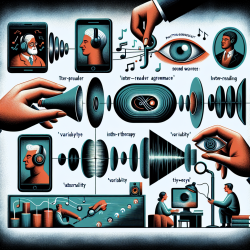Advancements in imaging technologies have opened new avenues for understanding the complex interplay between cortical structure and function, particularly in the realm of speech-language pathology (SLP). The research presented by Kenneth L. Watkin offers a compelling glimpse into how these technologies can enhance our diagnostic and therapeutic approaches, shedding light on the cerebral cortex's role in speech and language processing.
Imaging methodologies, including CT, MRI, PET, and SPECT, provide us with a detailed view of the brain's anatomical structure and functional activities. These tools allow clinicians and researchers to observe the brain in action, offering insights into the specific regions involved in speech and language processing. Such knowledge is invaluable for developing targeted interventions for individuals with speech and language pathologies.
One of the most significant implications of this research is the potential for early and accurate diagnosis. By identifying the specific cortical areas affected by a pathology, clinicians can tailor their therapeutic approaches to address the unique needs of each individual. This precision not only improves the efficacy of treatments but also offers patients a clearer understanding of their conditions.
Furthermore, imaging technologies can play a crucial role in tracking the progress of speech-language therapy. Through repeated imaging, clinicians can visually document changes in the brain's structure and function, providing concrete evidence of therapy's impact. This not only helps in refining therapeutic strategies but also motivates patients by showing tangible improvements.
Despite the promising potential of imaging technologies in SLP, it's essential to acknowledge the challenges that lie ahead. These include the need for further research to understand the complex brain-behavior relationships and the development of more accessible and cost-effective imaging tools. Nonetheless, the path forward is clear: integrating imaging technologies into speech-language pathology practice can significantly enhance our ability to diagnose, treat, and understand speech and language disorders.
To dive deeper into the fascinating world of imaging technologies and their application in speech-language pathology, I encourage you to explore the original research paper by Kenneth L. Watkin. It offers a comprehensive overview of the current state of research and points toward exciting future directions. To read the original research paper, please follow this link: Imaging Cortical Structure and Function: New Perspectives for Speech-Language Pathology.










